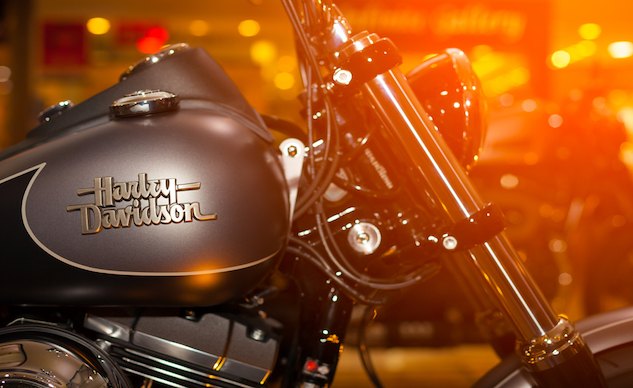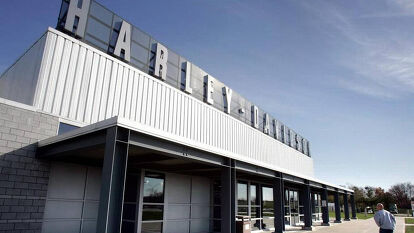Harley-Davidson To Close Kansas City Manufacturing Plant
The Motor Company forced to consolidate operations in light of falling revenue
Harley-Davidson, the world’s largest and most iconic manufacturer of heavyweight motorcycles, announced yesterday its fourth quarter and full-year results for 2017, which saw a steep 82% decrease in Q4 net income to just $8.3 million compared to $47.2 million the year before. In addition to that announcement, the Motor Co. declared that it would be shutting down the Kansas City, Missouri manufacturing plant, leaving up to 800 H-D employees without jobs by July 2019.
Harley-Davidson Q4 and 2017 Results: Not So Hot
The 400,000-square-foot Kansas City plant was built in 1997 and currently produces the Sportster and Street families of motorcycles, and, until recently, the former Dyna and V-Rod model lines. According to the company’s fourth-quarter earnings report, closing the Kansas City plant is expected to “incur restructuring and other consolidation costs of $170 to $200 million and capital investment of approximately $75 million over the next two years and expects ongoing annual cash savings of $65 to $75 million after 2020.”
H-D calls it a “multi-year manufacturing optimization initiative.”
“The decision to consolidate our final assembly plants was made after very careful consideration of our manufacturing footprint and the appropriate capacity given the current business environment,” stated Matt Levatich, Harley-Davidson’s President and CEO. “Our Kansas City assembly operations will leave a legacy of safety, quality, collaboration and manufacturing leadership.”
The decision to close the KC plant is purely based on economic reasons, and manufacturing of Sportsters and Streets will be consolidated in its recently revamped York, Pennsylvania, plant, where 450 new full-time, part-time and contracted jobs will be created. With the V-Rod and Dyna lines already dead, Sportster and Street production will join Softail and Touring model manufacturing all under one roof.
Touring Harley-Davidson’s Pilgrim Road Powertrain Operations Plant
“Factors that impacted the decision were plant size and layout, and the need for additional investments in equipment and floor space,” the Motor Company stated. “Consolidating into York will require less capital and can be completed one year sooner than if we consolidated into Kansas City.”
President Trump praised the company last year as a “great example” of a business creating jobs and building factories in the country, however, the earnings drop comes partially as a result of an increased effective tax rate of 39.6% compared to 32.4% in the year prior along with a $29.4 million charge for a voluntary product recall.
The increased tax rate was largely due to the impact of the write-down of deferred tax assets related to President Trump’s 2017 Tax Cuts and Jobs Act, which cost Harley-Davidson an additional $53.1 million in income tax for 2017. Harley-Davidson expects its 2018 full-year effective tax rate to be approximately 23.5 to 25.0 percent, down considerably behind the expected benefit of the new tax legislation.
It comes as no surprise that the Kansas City workers are shocked by the news. Kansas City beat out 30 other cities in 10 states in a months-long competition back in the mid-90s when deciding where to build a new H-D manufacturing plant. Then-mayor Emanuel Cleaver called it “a once-in-a-century catch for Kansas City,” according to the Kansas City Star.
“They didn’t even give us a call ahead of time,” Joe Capra, directing business agent for Local 778 of the International Association of Machinists & Aerospace Workers told the Star. “It is real devastation for these people who work here and work hard in the Kansas City area.”
Overall, Harley-Davidson worldwide retail motorcycle sales were down 6.7% in 2017 compared to 2016. U.S. retail sales decreased 8.5%, and international retail sales were down 3.9%. However, H-D representatives remain optimistic moving forward into 2018 and beyond.
“Our actions to address the current environment through disciplined supply and cost management position us well as we drive to achieve our long-term objectives to build the next generation of Harley-Davidson riders globally,” said Levatich. “We finished 2017 with over 32,000 more Harley-Davidson riders in the U.S. than one year ago, and we delivered another year of strong cash generation and cash returns to our shareholders.”
We don’t want to see Harley-Davidson, or any manufacturer for that matter, struggle or go anywhere, but the Bar and Shield certainly has a considerable amount of work cut out for itself.
More by Brent Jaswinski


































Comments
Join the conversation
Corporate money does not recognize national boundaries. Harley's red, white and blue marketing is marketing, not patriotism. If corporations were actually people, they would be sociopathic people.
The V rod was unable to pass the Euro 4 emissions Euro 5 in 2020 is 30% reduction in emmissions over Euro 4. Some Bikes are suddenly being dropped as manufacturers do not want to place more cash in developing new engines. Maybe why Harley going with more modular type engines. 2020 will make it even tougher for air cooled motors as smaller displacement water cooled with more turbos/Superchargers may be on the plate. Cars are already Euro 6 which makes electrification more reasonable. Harley is developing a wider audience with more bike categories. Hopefully some kids dirt bikes to get them starting young.